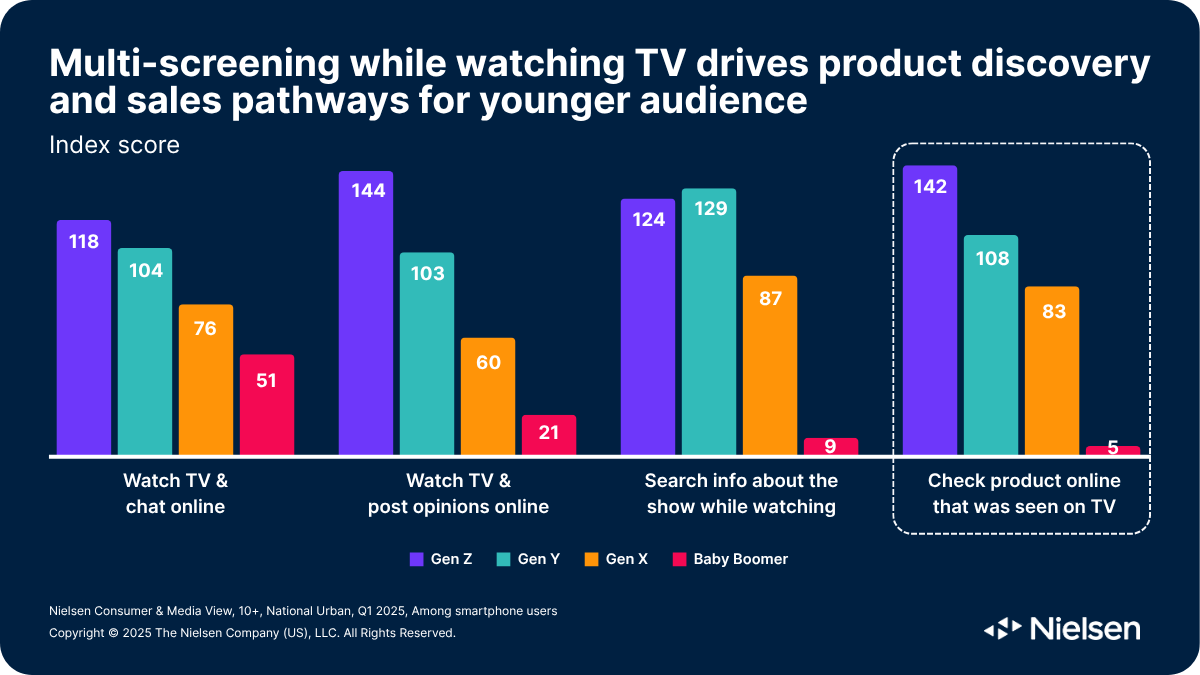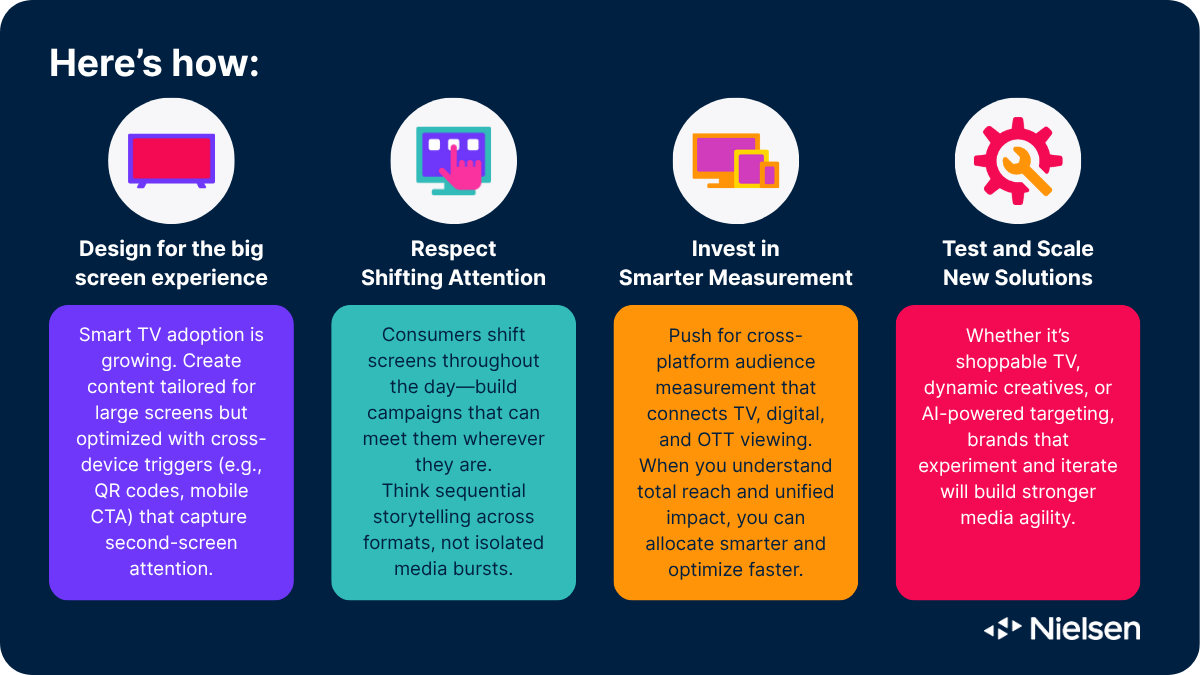In today’s media environment, multi-screening is not the exception—it’s the norm. From endless social media scrolls to binge-worthy over-the-top (OTT) streams, Indonesians are consuming more content than ever across screens. This creates a vibrant multi-screen ecosystem—one where the real challenge for brands is turning fragmented attention into unified, compelling journeys. But within this complexity lies a powerful upside—an opportunity to engage consumers across screens in ways that drive discovery, build preference and accelerate purchase. After all, if your ads aren’t there to capture these moments, your competitor’s surely will. This is the true promise of multi-screening.
The opportunity in multi-screening
According to recent Nielsen data, more than 70% of Gen Z and Gen Y in Indonesia now own both smartphones and TVs, with smart TV adoption rising rapidly, especially in urban and younger households.1 While television still enjoys strong household penetration across all generations, smartphone usage has surged, particularly among younger audiences, reflecting a growing urban-rural divide in digital connectivity.
This shift across screens creates a paradox for advertisers: greater reach potential, but fragmented attention. Understanding how people consume media today is critical.
Today’s audiences engage in a mix of behaviors—switching between screens throughout the day, using multiple devices at the same time for unrelated activities, and enhancing their main viewing experience by searching for related content or details on a second device. Whether they’re jumping from TV to mobile to research a product, scrolling social media while watching a show, or diving deeper online about what’s on screen, these habits create layered, dynamic opportunities for brands to connect.
For brands, these behaviors are not necessarily distractions—they’re pathways to discovery and conversion. Especially among younger Indonesians, multi-screening while watching TV often leads to product searches, online purchases, or social sharing.

Gen Z and Gen Y make the living room a commerce hub
Younger Indonesian audiences, particularly Gen Z and Gen Y, are at the heart of this shift, turning multi-screen habits into a powerful engine for discovery and sales. As they watch TV or stream OTT content, they’re simultaneously browsing on their mobile devices—often looking up brands or products they’ve just seen.
According to recent Nielsen Consumer & Media View data, Gen Z is 42% more likely than the average Indonesian to discover products through multi-screening, followed by Gen Y at 8%.2 This underscores why synchronized multi-screen campaigns like pairing a TV spot with TikTok retargeting and an e-commerce voucher can prove helpful in capturing momentum and driving meaningful conversions among these high-value segments.
The challenge: Fragmented data in a seamless consumer world
While consumers expect a seamless brand experience, advertisers continue to struggle with holistic media measurement. Nielsen’s 2025 Annual Marketing Report found that only 37% of marketers across the Asia-Pacific region are measuring digital and traditional media spending holistically.
As audiences fragment across media, so does the data used to measure their viewing. Without the right cross-media measurement, incompatible metrics and lack of transparency from walled gardens can make it harder for advertisers to get a unified view of how media touchpoints work together. This fragmentation creates real issues, such as:
- Budget misallocation, as advertisers can’t clearly attribute outcomes across screens.
- Inefficient frequency, leading to both overexposure and missed opportunities.
- Inconsistent messaging, especially across generational and geographic segments.
How advertisers can win in Indonesia’s multi-screen environment
To unlock ROI and drive sustainable growth in Indonesia’s complex media landscape, marketers must evolve from platform thinking to audience-centric strategies.

The bottom line for CMOs and marketers
The Indonesian media landscape is more dynamic than ever—but complexity should not hold you back. In fact, with the right insights and unified measurement, this fragmentation becomes a growth opportunity.
At Nielsen, we help brands navigate this new normal by turning audience behavior into business results. Whether it’s understanding your total audience, optimizing creativity across screens, or aligning ROI with media investments—we’re here to help.
Notes
1 Source: Nielsen Consumer & Media View, 10+, National Urban, Q1 2025
2 Nielsen Consumer & Media View, 10+, National Urban, Q1 2025, Among smartphone users

Want to talk with our team of experts?




